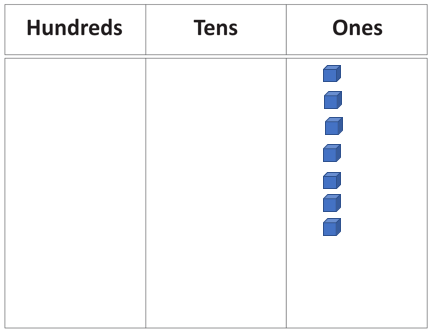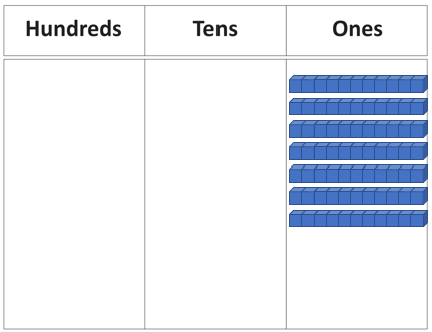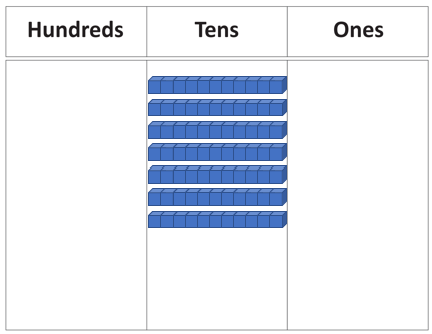Purpose
The purpose of this activity is to support students in multiplying by ten to find an amount ten times bigger than a given amount.
Achievement Objectives
NA2-4: Know how many ones, tens, and hundreds are in whole numbers to at least 1000.
Required Resource Materials
- Place value materials (e.g., BeaNZ, ice block sticks, place value blocks)
- Place value board (page 2)
- Calculator
Activity
- Pose problems that involve ‘ten times more’, such as:
Make a shape from seven unit cubes.
Here is a shape made out of seven unit cubes. If I make the shape ten times bigger than what it is now, how many cubes will I need to make the new shape?
Ask students to predict the answer.
- Model the solution with place value materials.
- Put seven unit cubes in the ones place of the place value chart.
- Exchange each unit cube for a long (ten) and move the longs into the ten’s column.
What number is ten times seven?
What equation can we write for this problem?
Key in 10 x 7 = 70 on the calculator and record the equation.



- Let the students anticipate, and then solve, similar problems with materials. Good examples are shown below. Ensure students express the relevant equations, using a suitable means of expression (e.g. written, verbal), as they work. Also consider allowing students to work in groupings that will encourage peer scaffolding and extension. Some students might benefit from working independently, whilst others might need further support from the teacher.
- What number is ten times six?
What number is ten times nine?
- Discuss the meaning of the -ty numbers as groups of ten, e.g. sixty as six tens.
You might record 6 x 10 = 60 (six groups of ten) and 10 x 6 = 60 (ten times six) to help students see the connection to the commutative property.
Next steps
- Increase the level of abstraction by covering the materials, asking anticipatory questions, and working with more complex facts.
- Progress to working with the word problems or equations alone, e.g. What number is ten times eight?
- Provide problems framed in real-life, meaningful contexts in which multiplication by ten can be used. For example:
- Here are eight $10 notes. How much money is that?
- Each packet has ten biscuits. There are seven packets. How many biscuits is that?
Add to plan
Level Two